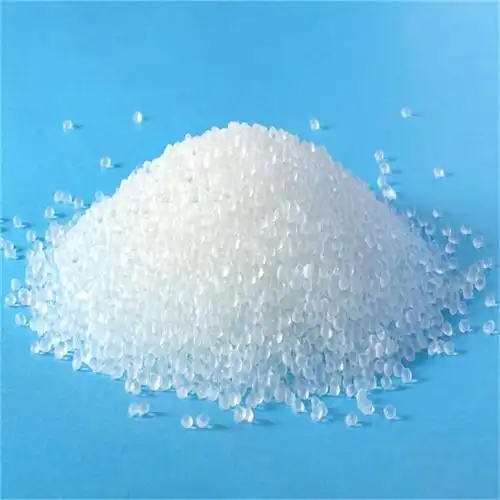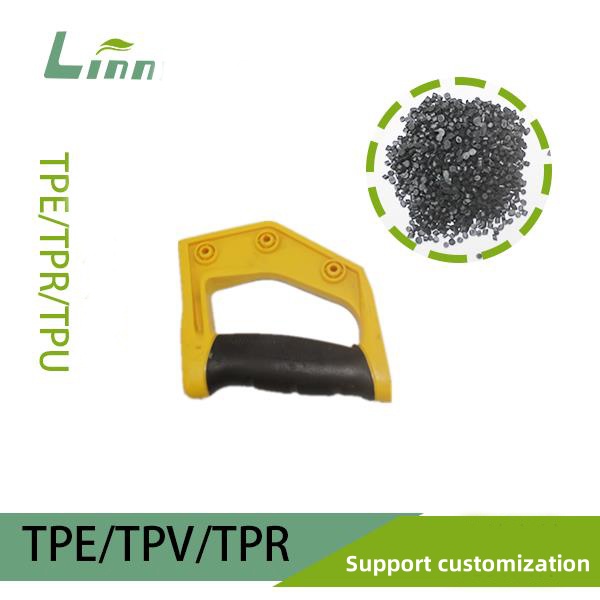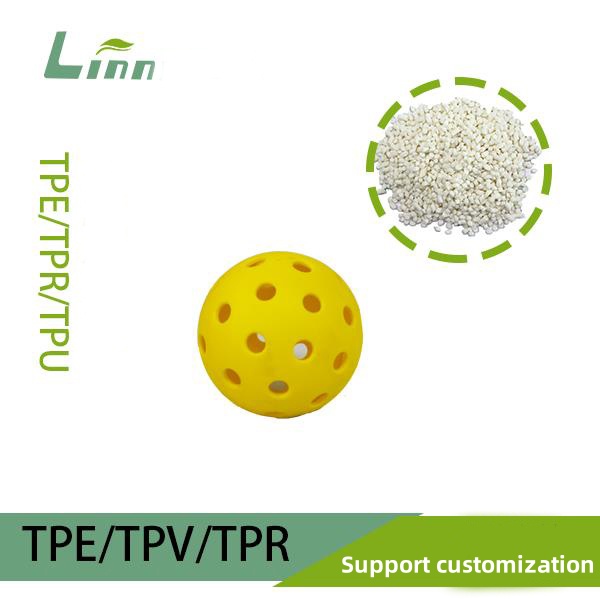Having spent nearly two decades in the plastics and elastomer industry, I’ve navigated the ins and outs of countless manufacturing processes, from injection molding to overmolding with thermoplastic elastomers (TPE). One question I hear often from manufacturers and engineers is: Does TPE overmolding require shrinkage consideration? It’s a crucial topic, as TPE overmolding—where TPE is molded onto a rigid substrate like plastic or metal to create soft-touch grips, seals, or ergonomic components—demands precision to ensure a perfect fit and function. Misjudging shrinkage can lead to warped parts, poor adhesion, or costly reworks. In this article, I’ll share my hands-on experience to explain how shrinkage affects TPE overmolding, when it matters, and how to manage it effectively, all while weaving in practical tips and real-world examples to guide you through the process.

What Is TPE Overmolding, and Why Does Shrinkage Matter?
Let’s start with the basics. TPE overmolding is a process where a flexible TPE layer is molded onto a rigid substrate, such as ABS, PC, or metal, to enhance grip, comfort, or sealing properties. You’ll see it in products like toothbrush handles, tool grips, medical devices, and automotive trim. TPE’s appeal lies in its rubber-like elasticity, durability, and ability to bond with various substrates, often without adhesives.
Shrinkage, in plastics processing, refers to the reduction in size of a molded part as it cools and solidifies. All polymers, including TPE, shrink to some degree after molding due to molecular rearrangement and cooling. In overmolding, shrinkage is critical because:
It affects the fit and finish of the TPE layer on the substrate.
It impacts bond strength between TPE and the substrate.
It can cause warping or distortion if not accounted for in mold design or process settings.
Ignoring shrinkage can lead to parts that are too small, misaligned, or prone to delamination. But TPE’s unique properties—its flexibility and varying formulations—make shrinkage considerations different from rigid plastics. So, let’s dive into whether and how shrinkage matters in TPE overmolding.
Does TPE Overmolding Require Shrinkage Consideration?
Yes, TPE overmolding requires shrinkage consideration, but the extent depends on the TPE type, substrate, mold design, and application requirements.
In my experience, TPE shrinkage is often less pronounced than for rigid plastics like PP or ABS, but it’s still a factor that can make or break a project. TPEs typically have shrinkage rates of 0.5-2%, depending on the grade, compared to 1-3% for rigid plastics. However, overmolding introduces additional complexity because the TPE must bond to a pre-molded substrate, and any mismatch in shrinkage can cause issues like poor adhesion or dimensional errors.
My Story: I once worked with a client producing TPE-overmolded tool handles. They ignored shrinkage, assuming TPE’s flexibility would compensate. The result was handles that were slightly undersized, causing loose fits on the metal core and customer complaints. After adjusting the mold to account for a 1% shrinkage rate, the parts fit perfectly, and production stabilized.

Factors Influencing TPE Shrinkage in Overmolding
To understand when and how to account for shrinkage, let’s explore the key factors at play:
1. TPE Type and Formulation
TPEs come in various types, each with different shrinkage characteristics:
TPU (Thermoplastic Polyurethane): Higher shrinkage (1-2%) due to its crystalline structure.
SEBS/SBS (Styrene-Based TPE): Moderate shrinkage (0.5-1.5%), more forgiving due to flexibility.
TPO (Olefin-Based TPE): Lower shrinkage (0.5-1%), often used for less critical applications.
Copolyester TPE: Moderate shrinkage (0.8-1.5%), varies with additives.
My Tip: Always consult the material data sheet from suppliers like BASF, Kraton, or DuPont for specific shrinkage rates. Additives like fillers or plasticizers can also affect shrinkage.
2. Substrate Material
The rigid substrate in overmolding (e.g., ABS, PC, or metal) has its own shrinkage rate, which interacts with the TPE:
Plastic Substrates: ABS or PC may shrink 0.5-2%, potentially causing stress if TPE shrinkage differs significantly.
Metal Substrates: Metals don’t shrink, so the TPE must be designed to accommodate this mismatch.
Bonding Method: Chemical bonding (e.g., with compatible plastics) or mechanical interlocking affects how shrinkage impacts adhesion.
Case Study: A client overmolding TPE onto PC parts noticed delamination. The PC shrank 1.5%, while the TPE shrank only 0.8%, causing stress at the interface. Adjusting the mold for TPE shrinkage and adding mechanical interlocks solved the issue.

3. Mold Design
Mold design plays a huge role in managing shrinkage:
Mold Dimensions: Molds must be oversized to account for TPE shrinkage, typically by the material’s shrinkage rate (e.g., 1% larger for 1% shrinkage).
Cooling Channels: Uniform cooling prevents uneven shrinkage, which can cause warping.
Gate Location: Gates should be placed to minimize stress in critical areas, especially near the substrate interface.
My Experience: I helped a manufacturer redesign a mold for TPE-overmolded medical grips. The original mold ignored shrinkage, leading to undersized parts. Adding a 1.2% shrinkage allowance and optimizing gate placement eliminated fit issues.
4. Processing Conditions
Processing parameters influence how TPE shrinks:
Melt Temperature: Higher temperatures (e.g., 190-220°C for TPE) can increase shrinkage by allowing more molecular movement.
Mold Temperature: Cooler molds (30-50°C) reduce shrinkage but may affect bonding.
Cooling Time: Longer cooling stabilizes dimensions but slows production.
Injection Pressure: Higher pressure can reduce shrinkage by packing more material into the mold.
Real Example: A client overmolding TPE onto ABS handles used a high melt temperature (230°C), causing excessive shrinkage and loose fits. Lowering it to 200°C and adjusting cooling time fixed the problem.

How to Account for Shrinkage in TPE Overmolding
To manage shrinkage effectively, follow this step-by-step approach based on my experience:
1. Review Material Data
Check the TPE and substrate data sheets for shrinkage rates (e.g., 0.5-2% for TPE, 0.5-2% for plastics).
Confirm bonding compatibility (e.g., SEBS bonds well with PP, TPU with PC).
Consult the supplier for specific recommendations, especially for filled or specialty grades.
2. Design the Mold
Oversize the mold cavity by the TPE’s shrinkage rate (e.g., 1% larger for 1% shrinkage).
Include draft angles (1-2°) to ease part release and minimize stress.
Optimize gate placement and cooling channels for uniform shrinkage.
3. Optimize Processing Parameters
Melt Temperature: Stay within the supplier’s recommended range (e.g., 180-210°C for SEBS).
Mold Temperature: Use 30-50°C for most TPEs to balance shrinkage and bonding.
Cooling Time: Allow sufficient cooling (10-20 seconds) to stabilize dimensions.
Injection Pressure: Use moderate pressure to pack the mold without over-compressing.

4. Test and Validate
Run a small batch to check part dimensions and bonding.
Use a caliper or CMM (coordinate measuring machine) to verify tolerances.
Adjust mold or parameters if shrinkage causes fit or adhesion issues.
5. Post-Molding Inspection
Check for warping, delamination, or dimensional errors.
Store parts in a controlled environment to prevent post-molding distortion.
My Story: A client producing TPE-overmolded tool grips had parts that were too tight on the substrate. We found the mold didn’t account for the TPE’s 1.5% shrinkage. Resizing the mold and lowering the melt temperature resolved the issue, improving fit and bonding.
Shrinkage Guidelines for Common TPE Types
Here’s a reference table for TPE shrinkage in overmolding:
| TPE Type | Shrinkage Rate (%) | Typical Substrates | Drying Needed? |
|---|---|---|---|
| TPU | 1-2 | PC, ABS, Metal | Yes (80-90°C, 3-4 hrs) |
| SEBS/SBS | 0.5-1.5 | PP, PE, ABS | Often (60-80°C, 2-3 hrs) |
| TPO | 0.5-1 | PP, Metal | Rarely (60-70°C, 1-2 hrs) |
| Copolyester TPE | 0.8-1.5 | PC, ABS | Yes (70-85°C, 2-3 hrs) |
Note: Shrinkage varies with additives, processing conditions, and part geometry. Always verify with the supplier’s data sheet.
Common Shrinkage-Related Mistakes
I’ve seen manufacturers stumble when overlooking shrinkage in TPE overmolding. Here are pitfalls to avoid:
Ignoring Shrinkage: Assuming TPE’s flexibility negates the need for shrinkage adjustments leads to misfit parts.
Mismatched Substrate Shrinkage: Not accounting for differences between TPE and substrate shrinkage causes stress or delamination.
Inconsistent Processing: Varying temperatures or cooling times can lead to uneven shrinkage across batches.
Poor Mold Design: Undersized molds or improper gate placement exacerbate shrinkage issues.
Case Study: A client overmolding TPE onto metal inserts didn’t adjust for the TPE’s 1% shrinkage. The TPE layer was loose, causing peeling. Resizing the mold and optimizing cooling fixed the fit, saving the production run.

Benefits of Accounting for Shrinkage
Properly managing shrinkage in TPE overmolding offers clear advantages:
Perfect Fit: Ensures the TPE layer aligns with the substrate, avoiding loose or tight fits.
Strong Bonding: Minimizes stress at the interface, improving adhesion and durability.
Reduced Defects: Prevents warping, voids, or delamination, boosting part quality.
Higher Yields: Cuts scrap rates, saving material and production costs.
Real Example: A manufacturer of TPE-overmolded medical handles adjusted their mold for 1.2% shrinkage. Rejects dropped from 15% to 2%, saving thousands in material and rework costs.
When Can You Ignore Shrinkage?
In some cases, shrinkage may have minimal impact:
Thick or Flexible Parts: Highly elastic TPEs or thick layers can tolerate slight dimensional changes.
Non-Critical Applications: For non-precision parts (e.g., decorative grips), minor shrinkage may not affect function.
Low-Shrinkage TPEs: Some TPO or SEBS grades have shrinkage below 0.5%, reducing the need for adjustments.
My Advice: Even in these cases, test a small batch to confirm fit and quality. For precision or visible parts, always account for shrinkage to be safe.

Additional Considerations for TPE Overmolding
Beyond shrinkage, other factors ensure successful overmolding:
Drying: Many TPEs (e.g., TPU) require drying to remove moisture, which can exacerbate shrinkage-related defects like bubbles. See my previous advice on TPE drying for details.
Substrate Preparation: Clean and, if needed, prime the substrate to enhance bonding.
Mold Surface: Textured or polished mold surfaces affect part appearance and release, influencing perceived shrinkage.
Testing: Use prototyping to validate mold design and process settings before full production.
My Experience: A client overmolding TPE onto ABS skipped drying and ignored shrinkage. The parts had bubbles and loose fits. Combining proper drying (80°C, 3 hours) and a 1% mold adjustment solved both issues.
Practical Tips for TPE Overmolding
Here are my top tips for managing shrinkage in TPE overmolding:
Start with Data: Use supplier shrinkage rates as a baseline for mold design.
Prototype Early: Test molds and settings on small runs to catch issues.
Monitor Consistency: Keep melt and mold temperatures stable to ensure uniform shrinkage.
Collaborate with Suppliers: Work with TPE and substrate suppliers to align material properties.
Real Example: A manufacturer of TPE-overmolded electronics casings prototyped their mold with a 1% shrinkage allowance. After minor tweaks, they achieved perfect fits, boosting customer satisfaction.

Conclusion: Shrinkage Is a Key Factor in TPE Overmolding
To sum up, TPE overmolding requires careful consideration of shrinkage to ensure proper fit, strong bonding, and defect-free parts. While TPE’s flexibility makes it more forgiving than rigid plastics, factors like TPE type, substrate material, mold design, and processing conditions all influence shrinkage outcomes. My years in the industry have shown that a little upfront planning—checking data sheets, designing molds correctly, and optimizing settings—can prevent costly mistakes. Whether you’re producing medical devices, tool grips, or automotive parts, account for shrinkage, and you’ll nail the quality every time. Got questions about your specific TPE overmolding project? I’m here to offer tailored advice!
Related Questions and Answers
Q1: How do I know the shrinkage rate for my TPE?
A: Check the material data sheet from the supplier (e.g., Kraton, BASF). Typical rates are 0.5-2%, but additives or blends can vary. Test a small batch to confirm.
Q2: Can I skip shrinkage adjustments for flexible TPE parts?
A: For thick or non-critical parts, minor shrinkage may not affect function. However, for precision or visible parts, always adjust the mold to avoid fit or bonding issues.
Q3: What happens if I don’t account for TPE shrinkage?
A: You risk loose or tight fits, delamination, warping, or dimensional errors, especially with rigid substrates like metal or high-shrinkage plastics.
Q4: How can I minimize shrinkage issues in TPE overmolding?
A: Use supplier-recommended shrinkage rates in mold design, maintain consistent processing conditions, dry the TPE if needed, and prototype to validate fit and bonding.





